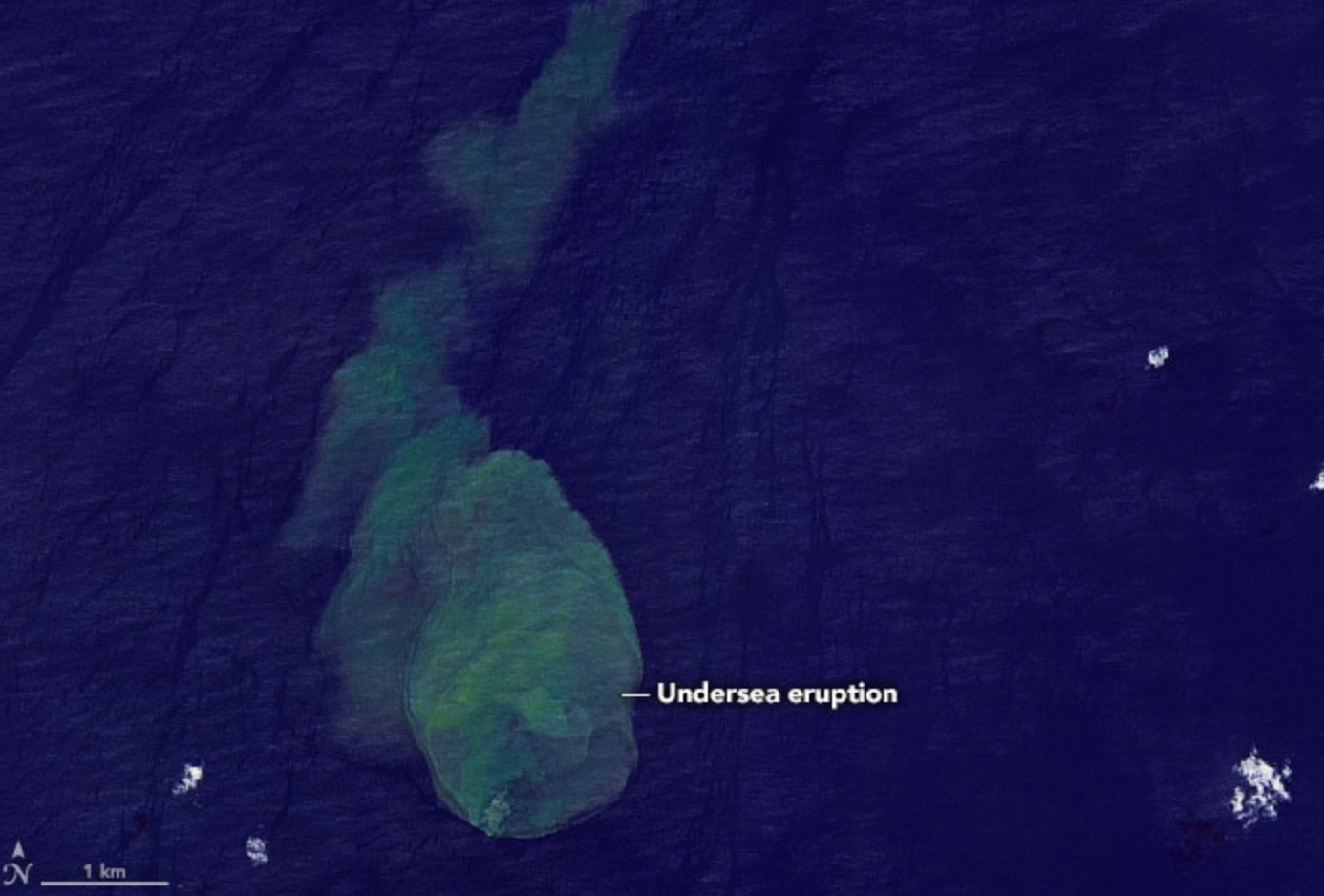Eruption of underwater ‘Sharkcano’, home to rare predators, is captured from space
Two species of shark, including hammerheads, dwell in the hot acidic waters around Kavachi

Your support helps us to tell the story
From reproductive rights to climate change to Big Tech, The Independent is on the ground when the story is developing. Whether it's investigating the financials of Elon Musk's pro-Trump PAC or producing our latest documentary, 'The A Word', which shines a light on the American women fighting for reproductive rights, we know how important it is to parse out the facts from the messaging.
At such a critical moment in US history, we need reporters on the ground. Your donation allows us to keep sending journalists to speak to both sides of the story.
The Independent is trusted by Americans across the entire political spectrum. And unlike many other quality news outlets, we choose not to lock Americans out of our reporting and analysis with paywalls. We believe quality journalism should be available to everyone, paid for by those who can afford it.
Your support makes all the difference.The eruption of a massive underwater volcano, dubbed the “Shark-cano”, has been captured from space.
The Kavachi Volcano is located near the Solomon Islands, a nation of hundreds of islands in the South Pacific. On 14 May, a Nasa Earth Observatory satellite captured a large plume of light discoloration in the water, suggesting that the volcano had erupted.
The submarine volcano was given its nickname after researchers from the California Academy of Sciences discovered two species of shark, scalloped hammerheads and silky sharks, dwelling in the hot acidic waters around Kavachi’s crater in 2015.
The findings of that trip were discussed in an academic paper the following year titled, Exploring the “Sharkcano”. The researchers noted their rare experience at Kavachi which is rarely studied due to its isolated location and “explosive behavior”.
“Populations of gelatinous animals, small fish, and sharks were observed inside the active crater, raising new questions about the ecology of active submarine volcanoes and the extreme environments in which large marine animals can exist,” the researchers noted.
An earlier study in 2008 found that submarine volcanic plumes can include particulate matter, rock fragments, and sulfur. The California research group also discovered microbial species, thought to increase in the presence of sulfur.
The volcano’s frequent eruptions can shoot molten lava up to 230ft (70m) out of the ocean, accompanied by 1600ft (500m) sulfurous steam plumes. The volcano’s summit is thought to be 65 feet (20m) below sea level and its base 0.75miles (1.2 km) down.
Kavachi sits under the water 15 miles south of Vangunu, an island with a population of a few thousand people, in an area with frequent tectonic activity.
Before it’s most recent eruption, activity was also observed at Kavachi in 2007 and 2014. The Smithsonian Institution’s Global Volcanism Program has the earliest report on Kavachi from October 1969.
“Captain John Seaton of Solomon Islands Airways reported that submarine volcano Kavachi . . . was sighted erupting pm 28 October. Brown pumice spread on sea for 70 miles; 0.5-second eruption cycle. No lava build-up above sea level,” the dispatch reads.
Join our commenting forum
Join thought-provoking conversations, follow other Independent readers and see their replies
Comments